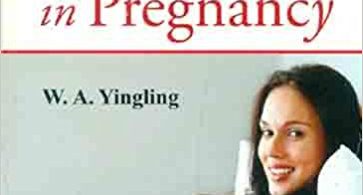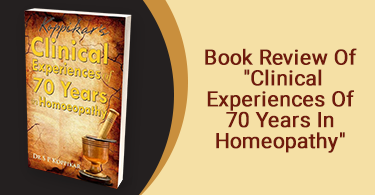This book contains keynote symptoms of many homoeopathic remedies which are clinically tested by Allen and some other students at Herring college of homeopathy.
This book is based on Hering’s guiding symptoms. Allen selected few guiding symptoms according to his personal experience and understanding for each drug which is called as keynote or most peculiar symptoms.
Allen has written this book in a very simplistic style which helps the students, practitioner, and teachers of homoeopathy to understand the symptomatology in order to individualise the remedy.
Individualisation is a most important aspect of homeopathic practise. To individualise the medicine, it is very important to learn the key aspect of each drug. Only on the basis of peculiar and characteristic symptoms can we individualise the medicines otherwise it becomes a very difficult task.
Especially when we talk about student life, every medicine looks similar to the other one which we have read before that. And despite trying to remember all symptoms we keep forgetting the common symptoms.
That’s why it is extremely important that we understand the central thread of the medicine and learn the most important individualising characteristic symptoms.
So that we don’t feel lost in the ocean of symptoms of the remedy. It helps our limited memory to revise and understand the Materia medica.
This book contains a good number of nosodes and bowel nosodes which makes it even useful for day-to-day practise.
It is an essential book for practitioners as well – as they don’t have much time to refer to the whole symptomatology of each drug from Materia medica pura or any such book but rather just conforming symptoms from this keynote book where most peculiar individual characteristics are stated clearly.
So, this becomes one of the important bedside prescriber books for busy practitioners as well.
One more interesting speciality of this book is the relation and modalities segment. After describing main symptoms the author gives a relationship segment where complementary, inimical, follows well etc remedies are given.
After which modalities – amelioration and aggravating factors are given. This segment is extremely useful for individualisation and in my clinical practice it has helped me a lot in solving many cases. From the author’s point of view also modalities are very important.
As the author mentions in the preface that many more remedies have been included and symptoms and comparisons extended, yet care has been taken that every symptom has been verified. The original plan has been maintained, viz., to give only those symptom-guides that mark the individuality of the remedy. that the student of Materia medica may use them as landmarks to master.
The lifework of any student of homoeopathic Materia Medica is of constant comparison and differentiation. we must differentiate the apparently similar symptoms of two or more medical agents in order to select the similimum.
And this book helps the student or practitioner to do this correctly and rapidly. This book is filled with symptoms that is peculiar, uncommon, or sufficiently characteristic in the confirmed pathogenesis of many polychrest remedies that can be used as a point of comparison. I
I feel this book makes the life of a student a little simple and makes it interesting and useful in day-to-day practice. This is a must have for every sincere homoeopath.
The only flaw I believe is the smaller number of drugs in this book. It could have been even bigger but whatever is written Is mostly clinically tested which is visible throughout the book.
Following parts are also included in the book later by the publisher –
- Repertorial index has been added by Dr. H.N. Singh. Here, only First grade remedies are given against the symptoms, starting from Mind to Generalities.
- Detailed descriptions of Bowel Nosodes, by John Paterson are mentioned at the end of the book making it a complete Materia medica package.
The Allen’s keynotes are compact Materia medica books which are comprehensive and easy to understand in nature. And it is one of the most loved medicine books by students and practitioners of homoeopathy. A must have book.
Title: Allens Key-Notes Rearranged & Classified (10Th Edition)
Author: H.C. ALLEN
ISBN: 9788131900888
Imprint: B. Jain Large Print
Pages: 432
Format: Paperback
Language: English
Dr. Henry Clay Allen was one of the guiding lights of Hahnemannian homeopathy. Even though he was steadfast in his adherence to the principles of Hahnemann, he always strived for constructive discussion. After receiving his graduation homeopathic training at Cleveland Homeopathic College at Cleveland, Ohio in 1861, he moved to Detroit and was appointed Professor of Materia Medica at the University of Michigan, Ann Arbor in 1880. In 1892 Allen helped found the Hering Medical College and hospital and worked there as Dean and Professor of Materia Medica until his death…… Read More
Dr. Vaibhav is a practicing homeopath. He is a patient listener and treats humans plants, and animals with homeopathy.
Dr. Vaibhav is a scientist and an artist both.
He started experimenting with Agrohomoeopathy 9 years back and now he is helping a lot of farmers, gardeners, and terrace garden owners to grow their plants with homeopathic medicine….. Read More









